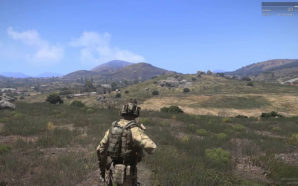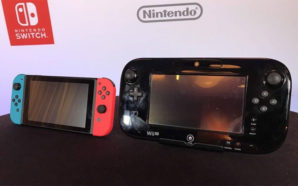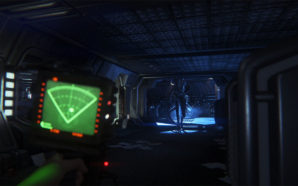I’ve always considered sound design to be a criminally underappreciated force for something so integral to a good game. Beyond passing comments like “the music in (game title) was awesome!”, it’s not often that players acknowledge (or perhaps even notice) the excellence of sound design – and that’s because they aren’t supposed to. Unlike visual fidelity, players rarely take away an explicit appreciation for sound in the same way they might stop to take in the vistas of Dark Souls. Sound design is at its best when it produces an effect so intuitive and organic that its function is seamless.
Sound is Knowledge
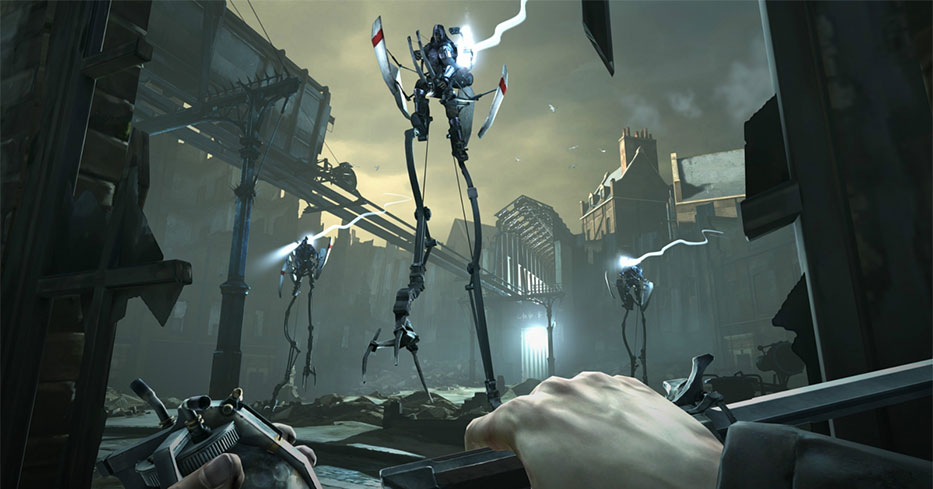
Dishonored’s sound design rewards players with situational awareness
In the context of gameplay, a well-designed sound needs to perform two functions: stand out, and divulge some kind of information. Arkane Studios’ stealth-action game Dishonored is one of the all-time best demonstrations of this. Each non-ambient sound infers either a gameplay option or an imminent threat, and the presentation of these sounds change depending on the severity of the situation. In the case of Dishonored, the sound effects which command the most immediacy – such as when a player enters an enemy’s line of sight – usually take the form of an invasive and unpleasant high-pitched string note. Subtler sounds on the other hand are softer, and alert players to nearby options and obstacles; the sound of squeaking infers that rats are nearby to possess, whilst an electric hum infers the presence of a Wall of Light.
More explicitly, dialogue is a useful tool for games to present information and opportunities to the player. In Hitman Blood Money, listening to NPC conversations can yield crucial information, particularly in the mission A Vintage Year. Players can overhear a conversation near the bar in which one of the targets is invited to participate in a private tour to the wine cellar. From this, players know where the target is headed, and can make their way to lay preparations. The way these NPC conversations are presented is also fantastic, particularly in the Hitman games due to the presence of a noisy crowd. In order to make important NPC discussions stand out without the use of cutscenes, the volume of other sounds, such as nearby crowds, are reduced. Additionally, as with most stock sound effects for crowds, they’re specifically recorded in such a way that no clear vocabulary or conversation can be made out. It’s more a mishmash of phonetics, which makes the actual conversations in Hitman and other games (and movies) stand out.
When Sound Takes Centre-Stage
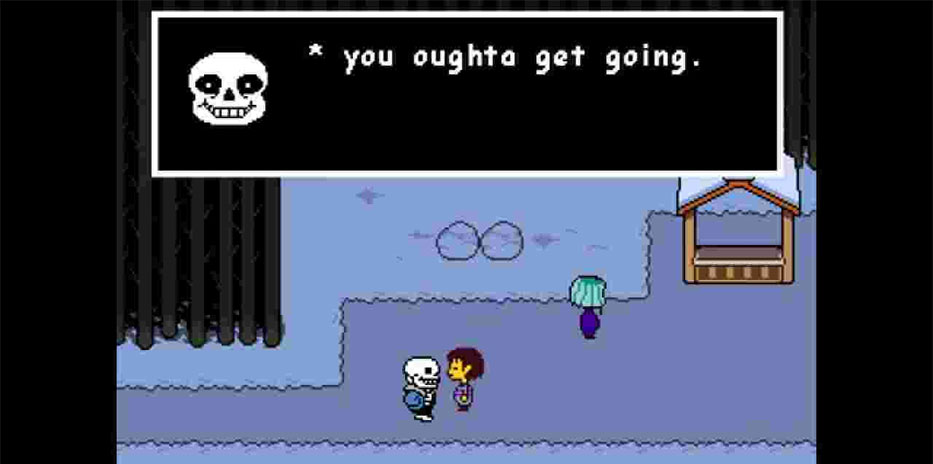
Undertale has the catchy motifs of a fourth-gen game and the characterisation of a world-class play
There are instances wherein sound can have a powerful and noteworthy effect. A game’s soundtrack for instance can sometimes be one of its most defining traits. This was definitely more frequent back in the third and fourth generation of consoles (the NES and SNES) days, which tended to go for ‘catchier’ soundtracks than the scores of today. The reason that older games employed catchier, snappier harmonies is because they were both technologically restricted and prone to repetition. Given the limitations of technology, songs had to be both short and significantly compressed in order to fit on cartridges, so composers like Super Mario Bros’ Koji Kondo had to keep that in mind. Catchier melodies are also common in difficult games like Street Fighter II and Super Castlevania IV because players would be repeating stages over and over, which would only be exacerbated by a grating soundtrack.
More recently however, Toby Fox’s genius RPG Undertale deploys sound on the front lines. Given the game’s nature as both of a love letter and critical take on old RPGs like Earthbound, its visuals are somewhat rudimentary. In fact, they might be as rudimentary as you can get, considering much of it was done on Microsoft Paint. Yet through the power of his amazing music, Toby Fox brings these environments and characters to life. The reverb on ‘Another Medium’ adds a sense of grandeur and scope to Hotland, whilst the lightly shaken tambourine adds to the festive atmosphere in ‘Snowdin Town’. Character themes are phenomenal as well, with Papyrus’ goofy, mischievous melody to match his japes, and Toriel’s theme carrying the soothing and peaceful presence of a mother figure. Undertale owes much of its charm and strong characterisation to its phenomenally fitting score, bringing more life to its characters than many high-budget games with a voiced cast and exceptional visuals often deliver.
The Sound of Silence
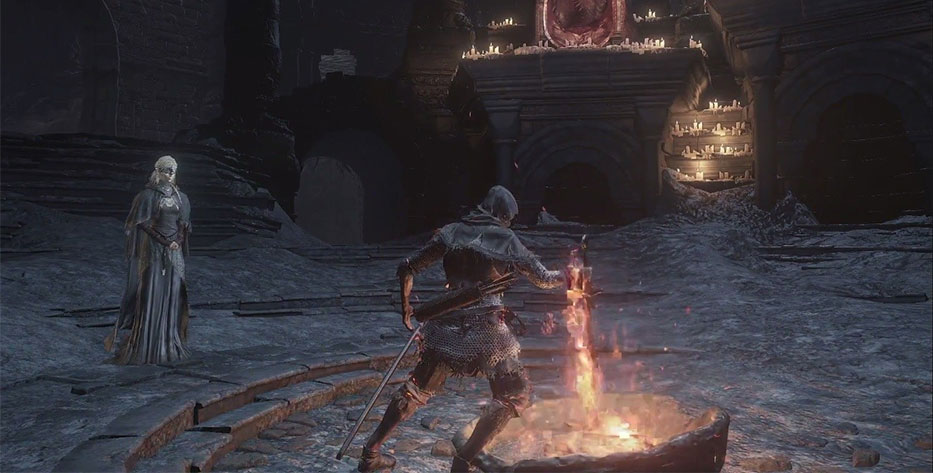
Silence can mean tension, safety and mourning
Whilst well-designed scores can drastically improve the quality of a game, the absence of sound can be equally effective. Most of the time, the absence of sound serves as a ‘calm before the storm’ moment, typically found in games where entering combat will trigger battle music. In Resident Evil 5 for instance, the game often enters a state where only diegetic sounds can be heard, with music kicking in only when hostile enemies appear. Virtually all players know this either consciously or subconsciously, so when the game is silent, players make the assumption that they are safe. Developers use this assumption to break the rules occasionally, with various traps and hidden enemies that will not trigger music when nearby, catching players off guard.
Silence is also a great device for building atmosphere. Dark Souls employs this fairly often, using silence not to fake-out players with a surprise strike, but to create a deliberately lifeless atmosphere. The world of Dark Souls is a hopeless one, elegant yet decayed, and built in such a way that it weakens the player’s spirit. It accentuates the feeling of loneliness, despair and isolation that almost everyone in that universe exhibits in some way or another. Whilst the game really kicks it into gear for boss fights with powerful operatic orchestras and strong percussion, most of the game is played exclusively in diegetic sound, as the player pushes on to link the flame. The silence in that respect makes the game an emotionally draining and pessimistic experience, and in a way it feels like game director Miyazaki is paying respects to the once-wondrous world of the Souls games.
To Play Us Out
All in all, sound design is an unsung hero for video games. It inspires us, it informs us, it scares us and it tricks us, often without realising it’s happening. For your enjoyment, I’ve selected a few tracks which I feel best demonstrate the sounds that gaming has to offer, and have linked them below.





